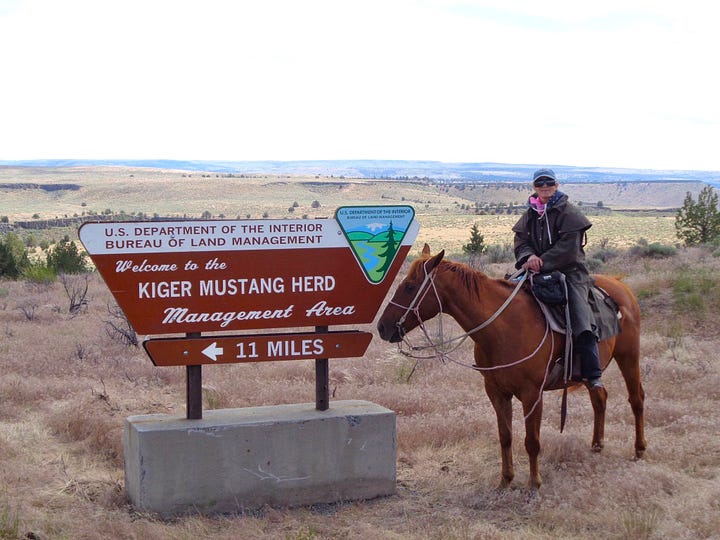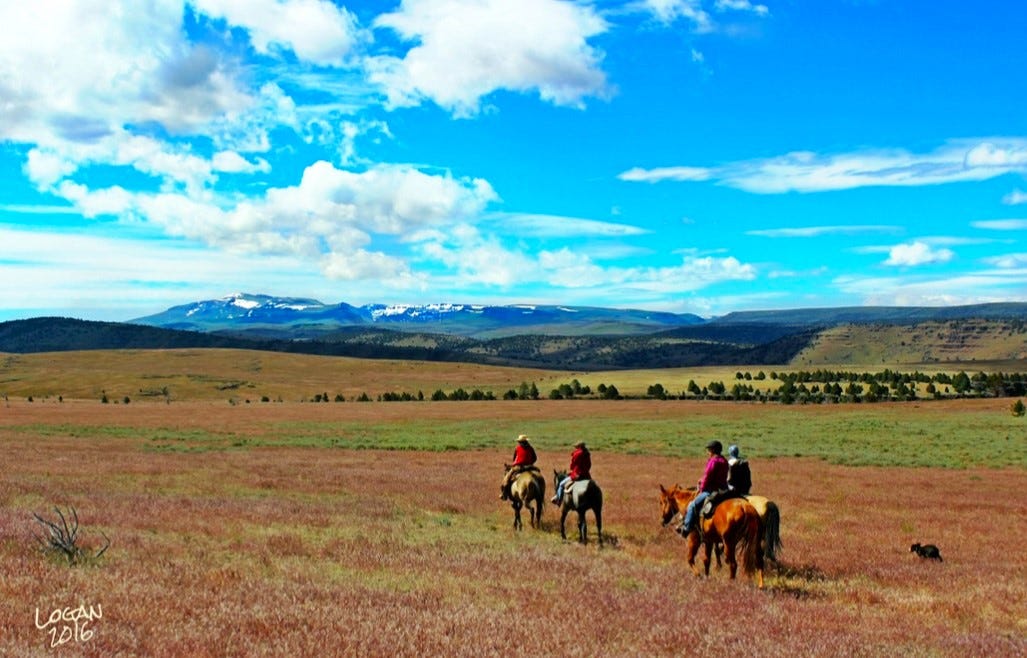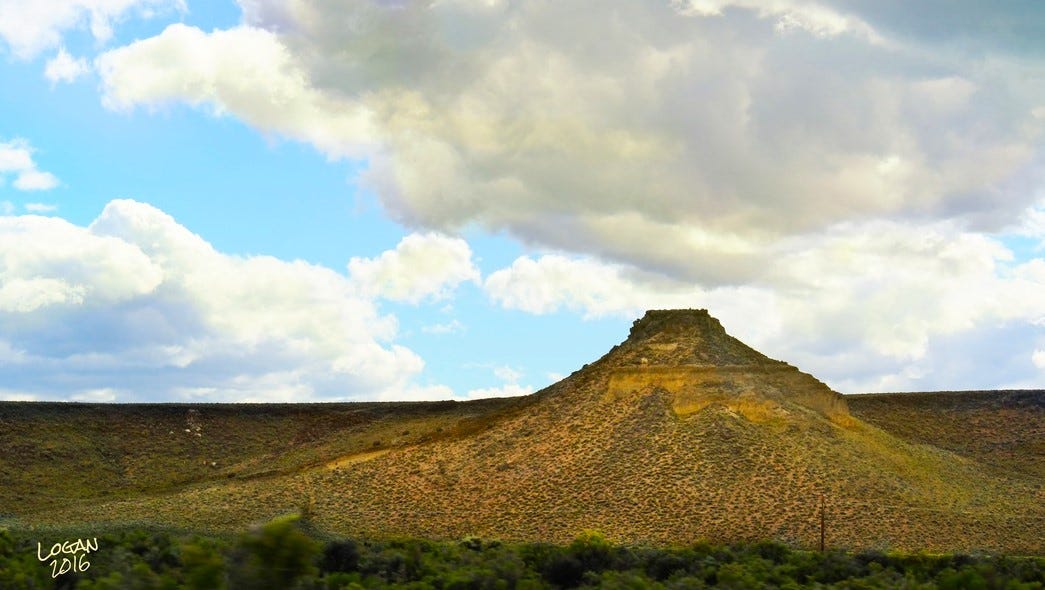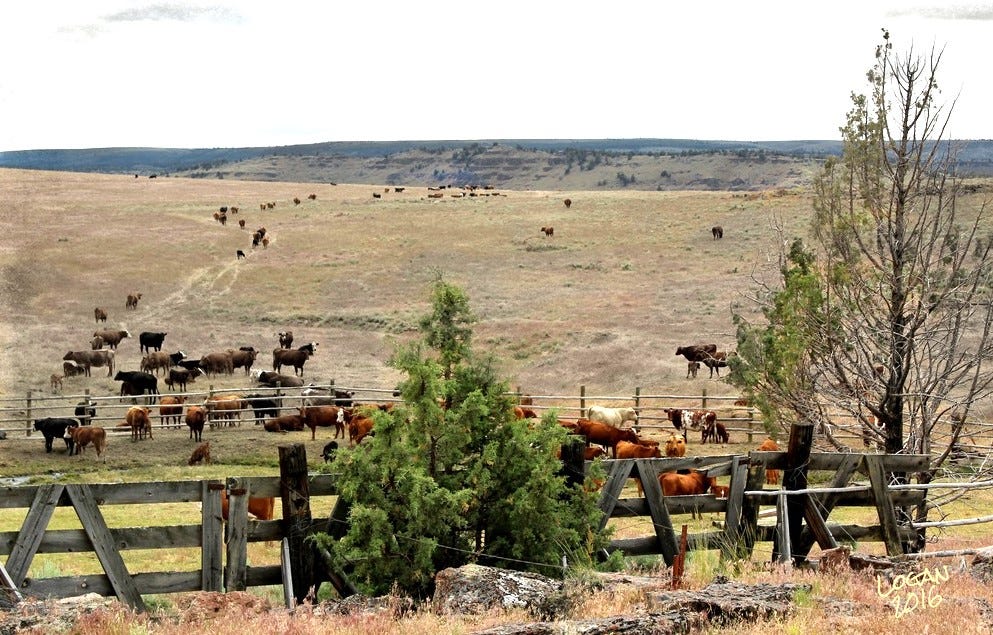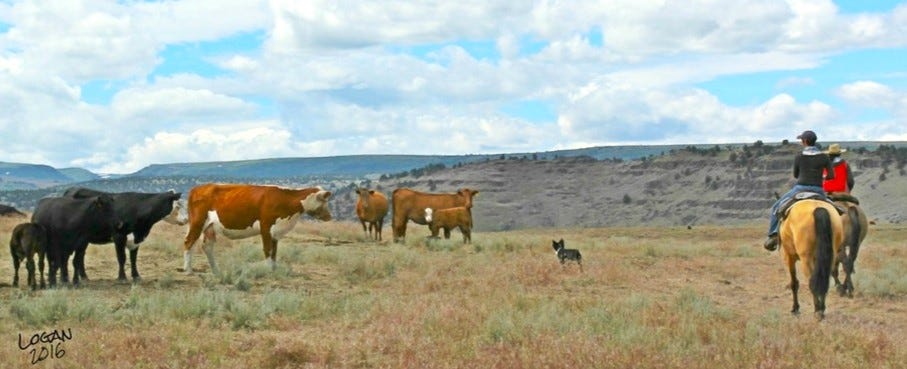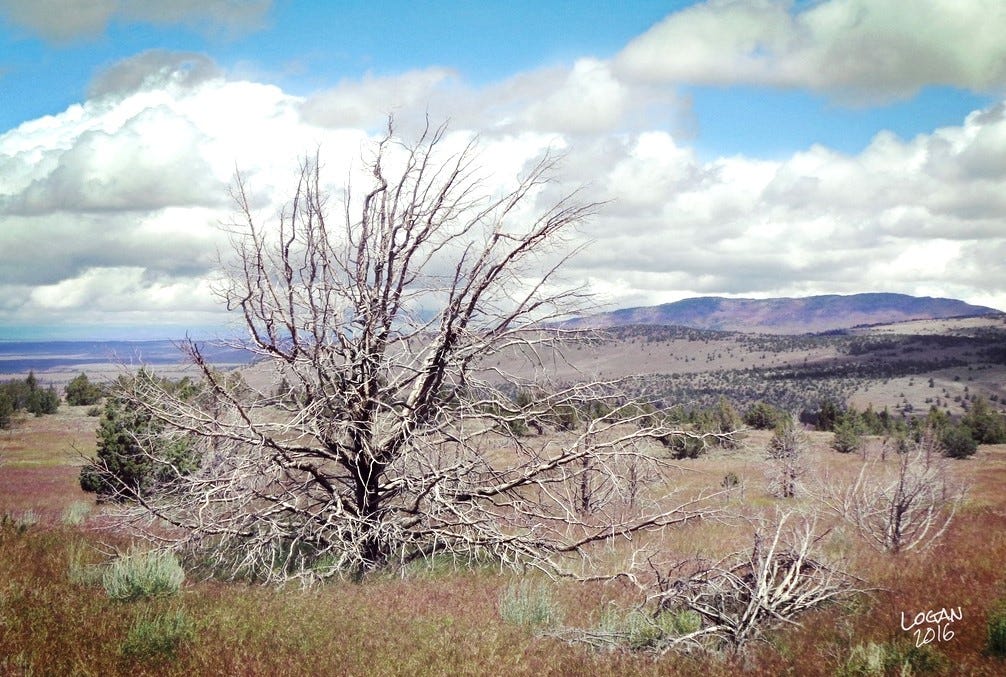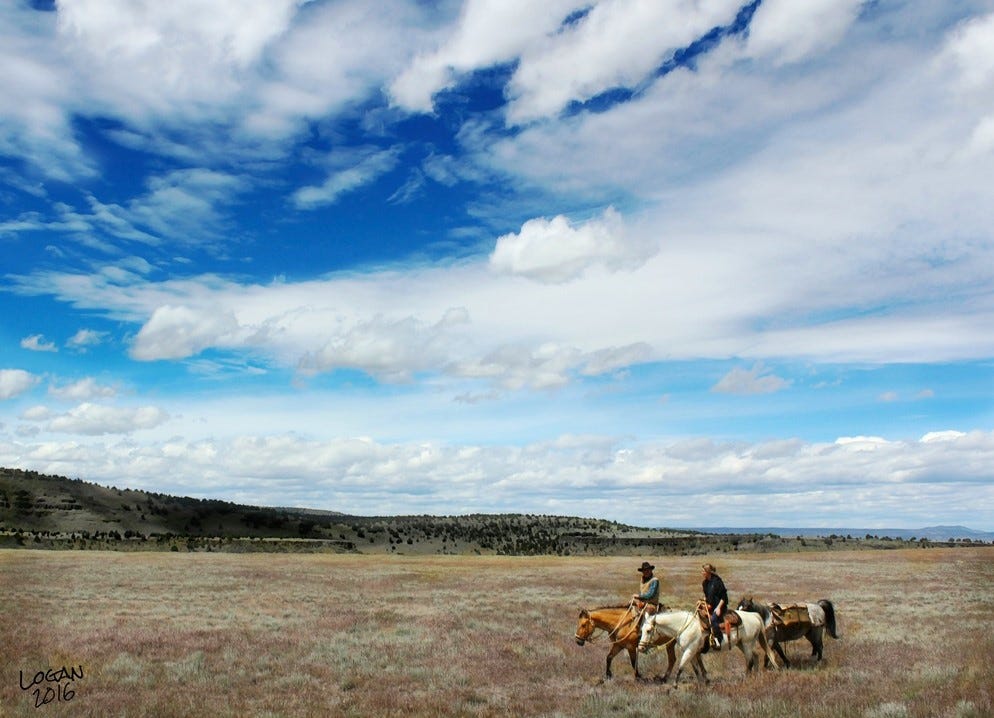High Country Horses - a Photo Essay
Riding over Oregon’s ancient basalt in search of wild mustangs.
Written and photographed by Logan Darrow
The high desert plains of southeast Oregon sweep across ancient volcanic lava flows, the once hot prehistoric magma now frozen in time and layered over with sand and prairie soils. Millions of years ago, the earth cracked and stretched, and new young volcanos laid down more layers of basalt and raised up cinder cones that still stand like tired sentinels.
Tectonic shifting heaved up block shaped mountains which slid sideways and broke apart, forming escarpments and narrow cracked valleys eroded by wind and water. Basalt rimrock runs for miles atop the edges of the canyons.

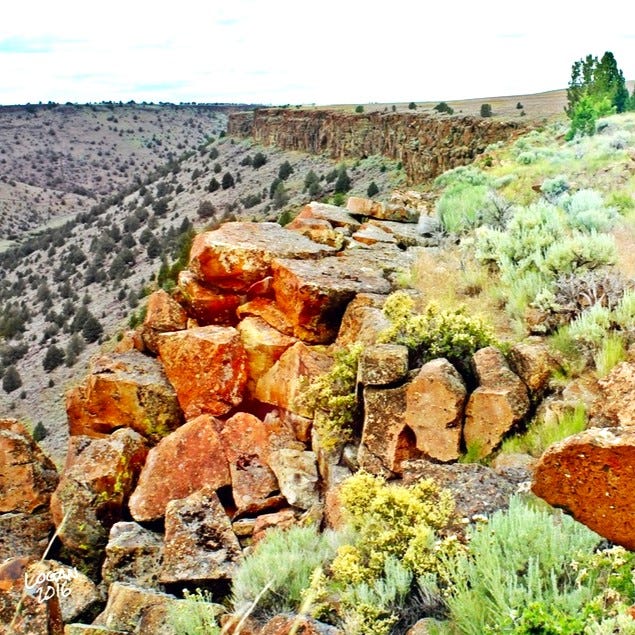
About 45 miles south as the crow flies from Burns, Oregon, lies the Kiger Mustang Herd Management Area, comprising almost 37,000 acres of plateaus, ridges and canyons on the slopes and valleys of Steens Mountain.
The Kiger Mustangs are a small, compactly built horse that exhibit the “dun factor” coloring: red, tan, grulla (gray), buckskin and variations of these colors, punctuated by dorsal stripes down their backs and zebra striping on their legs, perhaps echoing an ancestral connection to the now extinct tarpan, a wild horse of eastern Europe and Russian. They usually have little or no white on their bodies, and sometimes appear in solid dark bay or even black.
Below: a bachelor band of three young stallions stops to check us out.
Spanish horses from the Iberian Peninsula and North Africa brought to North America by the conquistadors are the ancestors of today’s Kiger Mustangs. The remote isolation of their range kept them from crossbreeding with a variety of other wild and domestic horses. Discovered in 1977, the Kiger herds are now managed by the BLM to preserve their unique characteristics. Horses that most match the desirable colors and Spanish body type are released back into the wild after the periodic gathers that are necessary to keep the population growing too large for the ecology to sustain.
In 2016 I spent two days on a guided horseback ride inside the Kiger HMA. I have ridden horses my whole life, but this was when I truly fell in love with the ancient volcanic topography that lies east of the Cascade Mountain range. Known as the Columbia River Basalt Group, these lava beds began their slow fire flooding over sixteen million years ago. The magma fueling the massive eruptions may have originated in a plume-like hot spot under the earth’s mantel. Since then the North American plate has shifted to the west, leaving the hotspot positioned under - you guessed it - Yellowstone National Park. (see map at the bottom of the page)


Above: generations of running on rock produces horses with feet like iron. The Kiger trail horse scrambling down the hill is not wearing any shoes - he doesn’t need them.
Cattle share the range land in the HMA. When the ecology of the area is carefully managed by the BLM and local ranchers, there is enough grazing for both horses and cattle. However, invasive plant species like cheatgrass and medusahead are crowding out native species of forage grass.
Below: the gray trunks of dead juniper trees, victims of wildfire, are strewed about the valleys, slopes and ridges. To help prevent the rapid spread of fires, the BLM cuts down a percentage of living trees. This allows their natural oils, which burn hot and fast, to dry out. While beautiful, junipers are invading high desert areas, robbing water from native species like sagebrush.
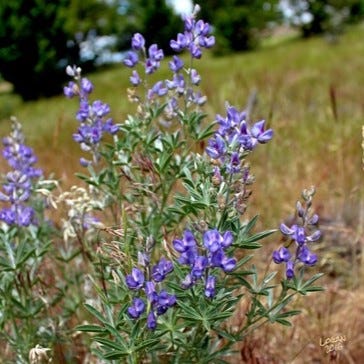
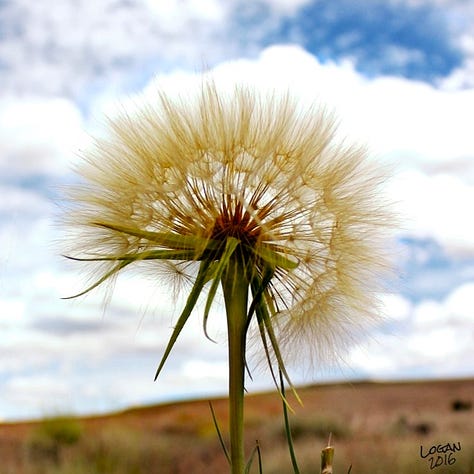
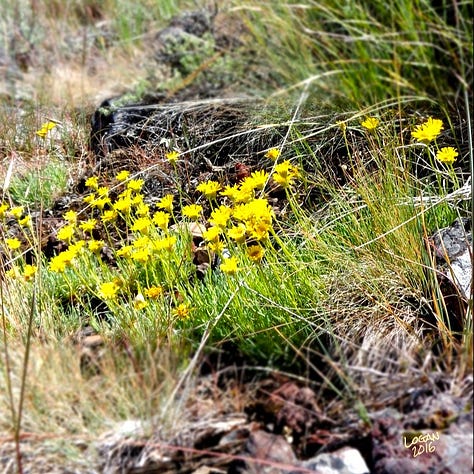
If you like open ranges and big skies, this is the country for you.

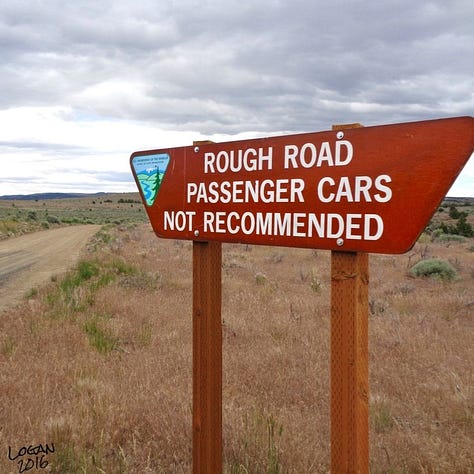

We didn’t see too many wild horses other than the three bachelors who wanted a closer look at us. The herds we did see kept their distance, disappearing behind the ridges and down into the valleys. But this remote, sparsely inhabited part of the northwest is spectacular, and no matter where you are, life always looks better from the back of a horse.

